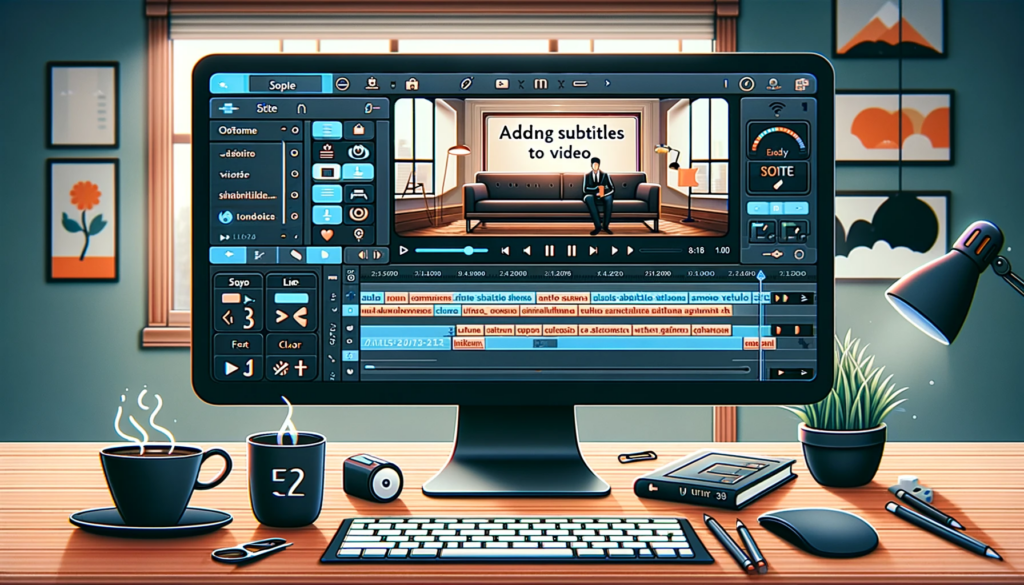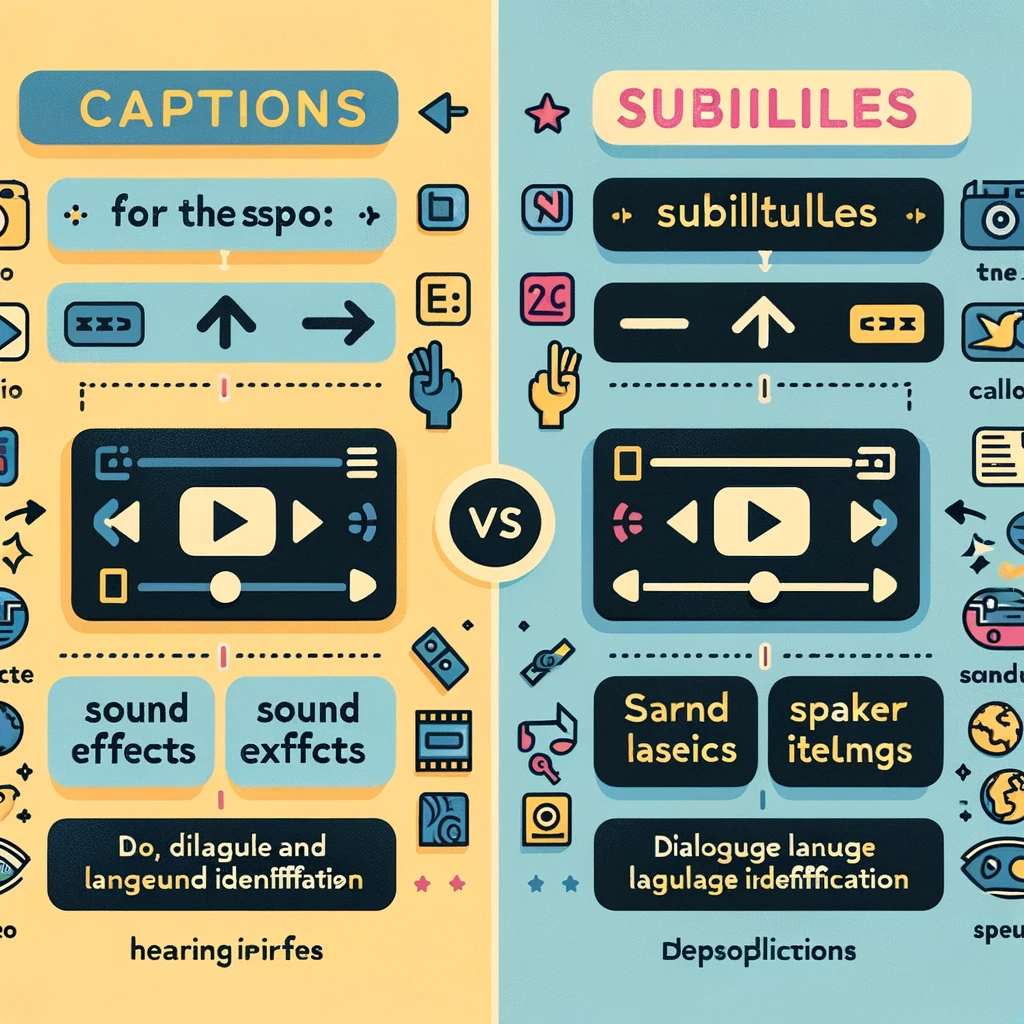Captions play a vital role in enhancing videos, especially when it comes to tutorials or green screen marketing productions. It’s important to incorporate captioning into your video production workflow.
Though adding captions and subtitles might seem a bit advanced compared to basic video editing, it’s now simpler than ever. Modern tools even allow you to transform screenshots into videos effortlessly! Subtitles not only make your video more engaging but also ensure that your audience fully benefits from your content.
Incorporating captions and subtitles may be an extra step in your video creation process, but they significantly broaden your audience reach, improve return on investment, and encourage more viewership.
You have several options for adding captions: doing it manually before finalizing your video, using a paid service, or utilizing an auto-transcription tool. Whichever method you choose, it’s straightforward to ensure your audience can easily enjoy and access your content.
Ready to begin?
How To Add Subtitles To A Video?

Adding subtitles to your video involves several key steps. The first step is to prepare your transcript. This transcript is the foundation of your subtitles and can be created by either manually typing out the dialogue while listening to the audio or by using an automated transcription service for efficiency and accuracy. Once you have your transcript ready, the next step is to choose a suitable video editing software. There’s a wide range of video editing tools available for this purpose, from professional-grade software like Wavel AI, Adobe Premiere Pro or Final Cut Pro to more user-friendly options like iMovie or Camtasia. Each of these tools offers different features and levels of complexity, so select one that best fits your skill level and the requirements of your project.
Once you’ve selected your video editing software, import the video file you wish to add subtitles to. This is where the actual subtitle creation process begins. If you’re adding subtitles manually, this involves creating text boxes within your video editing software and typing in your subtitles, making sure they are synchronized with the audio. For those who prefer a more automated approach, some video editing software allows you to upload your transcript file and automatically sync the text with the audio. After adding the subtitles, the critical step is to synchronize them with the audio.
This ensures that the text matches the timing of the spoken words, which is essential for viewer understanding and engagement. The final steps involve editing your subtitles for accuracy and clarity, checking for any spelling or grammatical errors, and adjusting the visual aspects like font size, color, and background to ensure they are easily readable. Once satisfied with the synchronization and appearance of your subtitles, export your video. Make sure to choose a format that supports embedded subtitles if they need to be part of the video file, ensuring your audience gets the full benefit of your content.
Add subtitles and captions to a video with Wavel

Adding subtitles and captions to a video with Wavel can be a straightforward process. Wavel is typically known for its audio transcription and subtitle generation services. Here’s a basic guide on how to use Wavel for this purpose:
1. Upload Your Video: First, you need to upload your video file to the Wavel platform. Ensure that the video format is compatible with the service.
2. Select Transcription and Subtitle Options:
– Transcription: If you need a transcript of the audio, Wavel can generate this for you. This is particularly useful for creating captions.
– Subtitles: If you’re looking for subtitles, particularly in a different language, select the appropriate language option for translation.
3. Automatic Generation: Wavel uses AI to automatically transcribe the audio and generate subtitles. This process might take some time depending on the length of your video.
4. Edit and Synchronize: After the initial transcription and subtitle generation, review the text for accuracy. Wavel usually provides tools to synchronize the subtitles or captions with the audio and make any necessary edits for clarity and correctness.
5. Customization: You can customize the appearance of your subtitles and captions, such as font type, size, and color, to ensure they are readable and meet your requirements.
6. Export or Embed: Once you are satisfied with the subtitles or captions, you can export them. Wavel might offer options to either download the subtitle file (like an SRT file) or to embed the subtitles directly into the video.
7. Testing: After adding the subtitles or captions, test the video to ensure that everything is synced correctly and the text is easy to read.
Captions vs subtitles, what’s the difference?

Captions and subtitles are similar in that they both display text on the screen to convey spoken dialogue in videos. However, they serve slightly different purposes and have distinct characteristics:
1. Captions:
– Primarily designed for the deaf and hard of hearing.
– Include not only the dialogue but also other relevant parts of the soundtrack. This might be sound effects, speaker identification, and other non-speech elements.
– Often used in the same language as the audio.
– Can be either closed (CC, can be turned on or off) or open (permanently on screen).
2. Subtitles:
– Intended for viewers who can hear the audio but need the dialogue in text form.
– Typically used for translating foreign language films and shows into the viewer’s language.
– Focus mainly on the spoken dialogue and do not typically include sound effects or speaker identification (unless it’s necessary for understanding the context).
– Usually always ‘closed’, meaning they can be turned on or off as needed.
Benefits of adding subtitles and captions to your videos
Incorporating or generating subtitles into your videos brings numerous advantages, key among them being the enhancement of accessibility for a broader and diverse audience.
Subtitles are particularly beneficial for individuals with hearing difficulties, as they enable these viewers to fully understand and appreciate the content. Moreover, subtitles can improve comprehension for all viewers, especially in instances where the video has background noise.
Another significant advantage of subtitles is their contribution to improving a video’s Search Engine Optimization (SEO). Search engines analyze various metadata to decipher a video’s content, which includes elements like titles, descriptions, and subtitles. By adding subtitles, you are providing additional information that can help in elevating your video’s search ranking.
Furthermore, subtitles can lead to increased viewer engagement. In situations where it’s impractical to increase the volume, such as in noisy or public settings, subtitles allow viewers to follow along and stay engaged with your video content, regardless of their environment.
What type of videos need subtitles?
The consumption of media has undergone a significant transformation, necessitating creators to avoid making assumptions about their audience’s location, device preference, or viewing environment. Videos today are accessed across a variety of devices, from desktop computers to handheld devices, and in diverse settings like home offices, cafes, and public transportation. This variability in consumption patterns underscores the need for creators to prepare their content for a wide range of viewing scenarios.
Importance of Subtitles
Necessity for Silent Playback
On platforms like Facebook and Instagram, videos often play without sound by default. Many users prefer watching these videos without enabling sound. Hence, incorporating subtitles is critical for capturing attention and ensuring that your content is understood and appreciated, even in silent mode.
Language and Accessibility
Subtitles can be translated into multiple languages, aiding non-native speakers in understanding and engaging with your content. This feature broadens the reach of your videos, making them accessible to a global audience.
Enhancing Learning Experience
Subtitles play a pivotal role in educational videos. They aid in comprehension, reinforce key concepts, and enhance knowledge retention, thereby enriching the learning experience. This is especially important in contexts where following spoken lectures might be challenging for some students.
Inclusivity for International Students
The ability to translate subtitles into various languages makes educational content more inclusive, catering to the needs of international students and ensuring that no essential information is lost.
Engagement and Retention
In the business context, subtitles can significantly boost engagement and retention among employees and customers. This is vital for internal communication videos or for conveying technical content.
Frequently Asked Questions
1. How Can I Add Captions to My Videos Using Wavel AI?
To add captions using Wavel AI, first upload your video to the platform. Once uploaded, Wavel AI will automatically transcribe the audio into text. You can then review and edit the transcription for accuracy. Finally, synchronize the captions with the video timeline, and export your video with the embedded captions.
2. What Formats Can I Use to Upload Videos for Captioning on Wavel AI?
Wavel AI supports various video formats including MP4, AVI, and MOV. Ensure your video is in a compatible format before uploading. If it’s not, consider converting it to a supported format using a video conversion tool.
3. Can Wavel AI Automatically Translate Captions into Different Languages?
Yes, Wavel AI offers automatic translation features for captions. After generating the initial captions in the video’s original language, you can choose to translate them into multiple languages, making your content accessible to a wider, global audience.
4. Is it Possible to Customize the Appearance of Captions in Wavel AI?
Absolutely! Wavel AI provides options to customize the font, size, color, and position of your captions. This customization allows you to ensure that the captions are both readable and stylistically in line with your video’s aesthetic.
5. How Accurate are the Automatically Generated Captions by Wavel AI?
Wavel AI’s automatic caption generation is highly accurate, but the accuracy can vary depending on the clarity of speech, background noise, and the complexity of the language used in the video. It’s recommended to review and edit the captions for any inaccuracies or to add context where necessary.

.webp)










